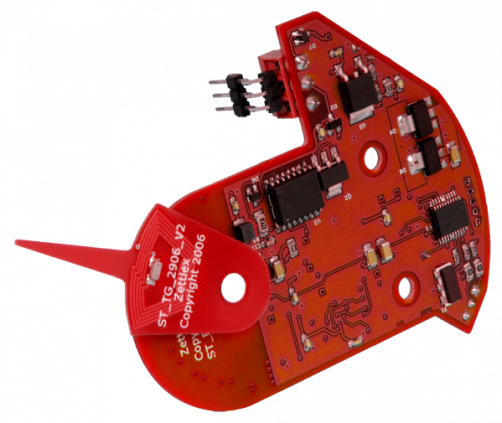Harsh environments place heavy demands on control equipment. The failure of position or speed sensors in the field can have a massive technical and commercial impact. How do you make sure your sensors will not let you down when the going gets tough? One option is to specify high reliability, fully qualified, redundant sensors with military style connectors and heavy duty housings. The cost of this approach is prohibitive for most applications. This technical article examines more cost-effective options.
Harsh environments are the norm in many sectors such as aerospace, satellite communication, heavy industrial, utility, oil and gas. There is no hard and fast rule as to what constitutes a ‘harsh environment’ but, for the purposes of this article, we define a harsh environment as one containing one or more of the following factors: high temperatures (>85°C), low temperatures (<-20°C), thermal cycling, high vacuum, high pressure (>10bar), vibration, shock, AC/DC noise, radiation, water, dirt, aggressive chemicals, long term immersion, extended life (>10 years), explosive dusts & gases (ATEX rated environments).
Such environments invariably make the selection of appropriate equipment both difficult and critical because performance and reliability will surely be tested. Nowhere is this truer than in the selection of electrical control equipment. Failures in the electrical components of modern machinery typically account for >80% of all failures.
Across all sectors, potentiometers are the most ubiquitous position sensor. They are simple, compact, lightweight and low cost. A contact device, the potentiometer is susceptible to wear. Wear rates accelerate rapidly with vibration or the ingress of foreign matter such as sand or grit. The basic materials of most potentiometers are generally not well suited to extreme temperatures.
Optical encoders deliver the highest precision but are challenged in harsh environments. Transmissive optical encoders are particularly sensitive to shock and contaminant ingress. Optical encoders based on the principle of light wave interference are more rugged but the requirement for silicon based electronics at the sensing point inevitably limits the operating temperature.
Magnetic encoders, both Hall and magnetoresistive, are rugged, compact and can be very cost-effective. They are, however, susceptible to magnetic fields and the accuracy of the device changes over operating temperature range. The magnetic track is relatively brittle and can be susceptible to shock. Magnetic encoders can be submerged but only if the liquid is completely free of ferrous particles. Similar to optical encoders, magnetic encoders have electronics at the sensing point limiting operating temperature.
Capacitive position sensors are not widely used in extreme environments. Although they are resilient to wear, shock and vibration, they suffer from drift due to variation in temperature or humidity and are susceptible to foreign matter. This is because the capacitive sensing principle is fundamentally unable to differentiate between the capacitive target object and foreign material such as a grease smear, ice or water condensation.
Inductive devices such as resolvers are the traditional choice for the ‘high integrity’ applications in the aerospace, heavy industrial, and oil and gas sectors. Such devices have a well-deserved reputation for reliability. In some cases, the use of inductive devices is mandated by regulations relating to safety critical or safety-related applications. The textbook application is aerospace actuators for ailerons – a harsh environment with extreme temperatures, vibration, foreign where reliable and accurate operation is essential.
Resolvers work on the same fundamental principles as a transformer which means that no silicon based electronics is necessary at the sensing point. The electronics reside in a typically more benign environment where temperature extremes are unlikely to exceed the -40 to 125°C limits for most commercial electronic components. The transformer windings of resolvers make them bulky and heavy. High accuracy devices require precision wound spools that are difficult and expensive to manufacture.
A more cost-effective form of the inductive position and speed sensor has emerged in recent years in a new generation of inductive devices known as the inductive encoder. These devices use compact, lightweight printed circuit boards rather than the traditional bulky transformer windings. This approach has led to a wide variety of shapes and sizes of sensor ranging from <1mm to >1000mm and covering linear, rotary, curvi-linear, 2D & 3D forms. Inductive encoders deliver high levels of accuracy without tight installation tolerances.
The fundamental operating principles are similar to resolvers and associated electronics can be located away from the harsh conditions surrounding the sensing point. The performance of the inductive encoder is at least as good in harsh environments as resolvers, offering up to 24bit resolution and accuracies of <20 arc-seconds over 360°. Encapsulation of the main printed components makes the sensors extremely robust and ideally suited to intrinsically safe (ATEX) applications. Since there are no electrical contacts and the main components are lightweight, they offer remarkable performance in extreme vibration and shock environments. The aerospace industry has been quick to capitalize on the new technology and inductive encoders have been successfully used in flight controls and unmanned aerial vehicles.


Figure. 1 – Example of inductive linear and rotary encoder – speed sensors ideally suited to harsh environments.
| Potentiometer | Optical | Capacitive | Magnetic | Resolver | IncOder | |
| High Temperature >85°C | ✔ | ✔ | ✔ | ✔ | ✔ | |
| Low Temperature <-20°C | ✔ | ✔ | ✔ | ✔ | ✔ | ✔ |
| Low Temperature <-40°C | ✔ | ✔ | ✔ | ✔ | ||
| Low Temperature <-55°C | ✔ | ✔ | ||||
| Liquid Ingress | ✔ | ✔ | ||||
| Dust Ingress | ✔ | ✔ | ||||
| High Vibration | ✔ | ✔ | ✔ | ✔ | ✔ | |
| High Shock | ✔ | ✔ | ✔ | ✔ | ||
| Explosive Dusts or Gases | ✔ | ✔ | ✔ | ✔ | ✔ | ✔ |
| Life of >10 years | ✔ | ✔ | ✔ | ✔ | ✔ | ✔ |
| Life of >20 years | ✔ | ✔ | ✔ | ✔ | ✔ | |
| Long term submersion | ✔ | ✔ | ✔ |
Figure. 2 – Comparison table of sensor types versus environmental factor.







